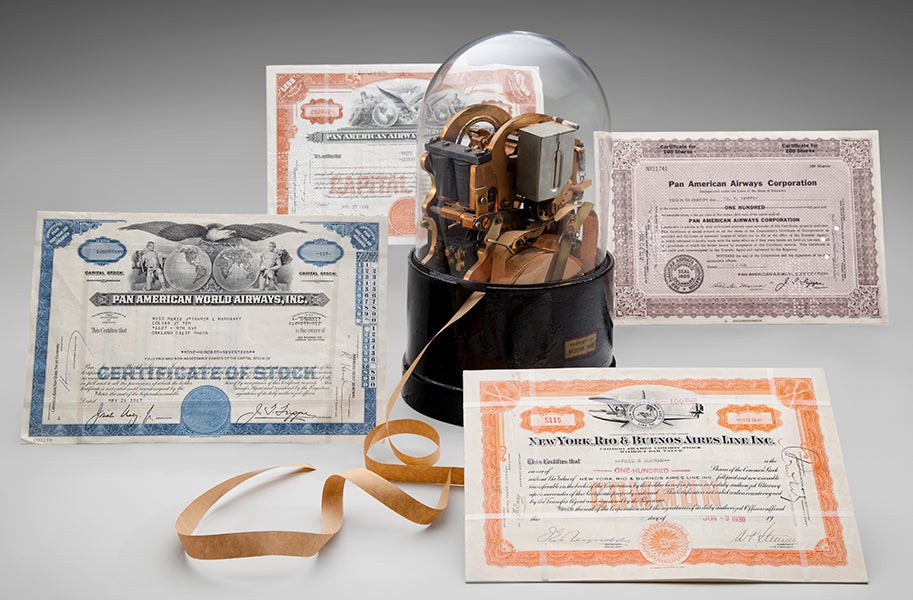Financing Pan Am: The Jon E. Krupnick Scripophily Collection
Financing Pan Am: The Jon E. Krupnick Scripophily Collection
In free-market economies, individuals can become partial owners of companies if shares are offered to the public for sale as stocks. If the company succeeds, the value of the stock typically goes up. Historically, shares are represented by stock certificates printed on bond paper from engraved plates. Many have ornate vignettes illustrating an aspect of the company business.  Stocks are now issued electronically, which has made such paper certificates items of interest to collectors. A branch of numismatics, the colleting of currency, this area of collecting is called scripophily —a combination of the English word "scrip" meaning ownership rights and the Greek word "philos" meaning love.
Stocks are now issued electronically, which has made such paper certificates items of interest to collectors. A branch of numismatics, the colleting of currency, this area of collecting is called scripophily —a combination of the English word "scrip" meaning ownership rights and the Greek word "philos" meaning love.
On June 2, 1927, just ten days after Charles A. Lindbergh's sensational trans-Atlantic solo flight, Juan T. Trippe, John A. Hambleton—both experienced pilots—and financier Cornelius V. Whitney formed the Aviation Corporation of America (ACA) with each putting up $25,000. Additional shares were quickly issued to other like-minded aviation figures, including Grover Loening and Sherman M. Fairchild, and to other moneymen with names such as Rockefeller, Mellon, and Knox raising the initial capital to $300,000. These holdings were put into the newly formed Pan American Airways, winner of the foreign air airmail contract to Cuba, which flew its first operation on October 19, 1927, and shares were offered for public sale. The purchase of airline stocks tripled between 1927 and 1929.
Between 1932 and 1939, Pan American Airways rapidly expanded throughout the Caribbean, encircled Latin America, and established the world's first airplane service across the Pacific and Atlantic oceans.
Pan Am stock certificates were printed well into the jet age. Today, twenty years after Pan Am ceased operations, these paper artifacts have become touchstones of the past. In recalling the formative years of commercial aviation they remind us that, while airplanes needed wings and engines needed fuel, it was actually money that made the propellers spin.
The Financing Pan Am exhibition presents over forty examples of original stock certificates issued during the early decades of the company that would come to be known as the world's most experienced airline. These unique financial instruments, signed by many of commercial aviation's most notable figures, were donated to the SFO Museum by Jon E. Krupnick in 2010.
[inset image]
Airline stock certificates 1920s–30s
SFO Museum
gift of Jon E. Krupnick
Western Union stock ticker tape machine c. 1903
courtesy of the Museum of American Finance.
©2011 by the San Francisco Airport Commission. All rights reserved.